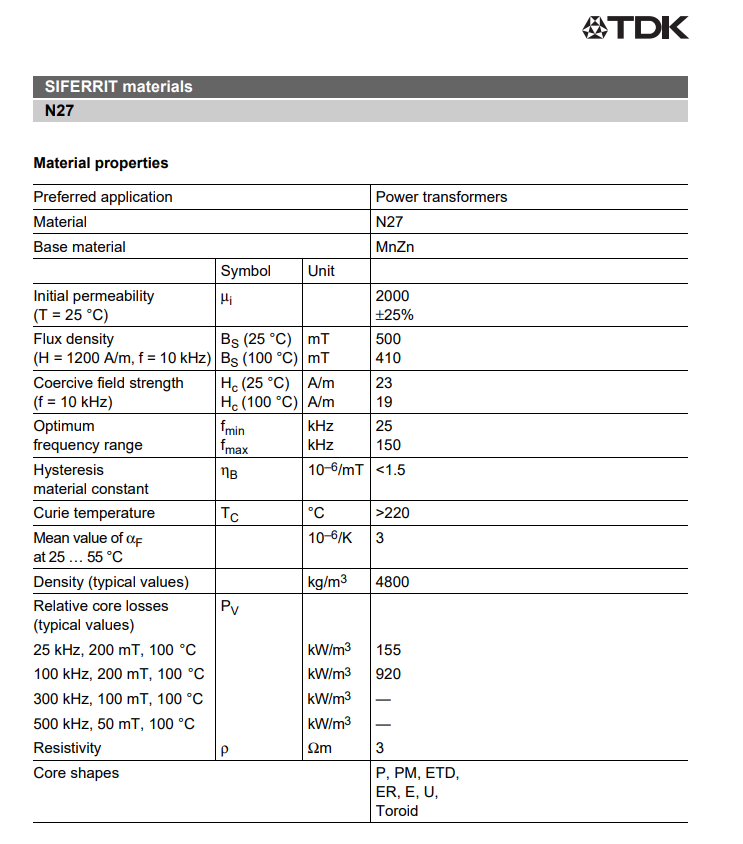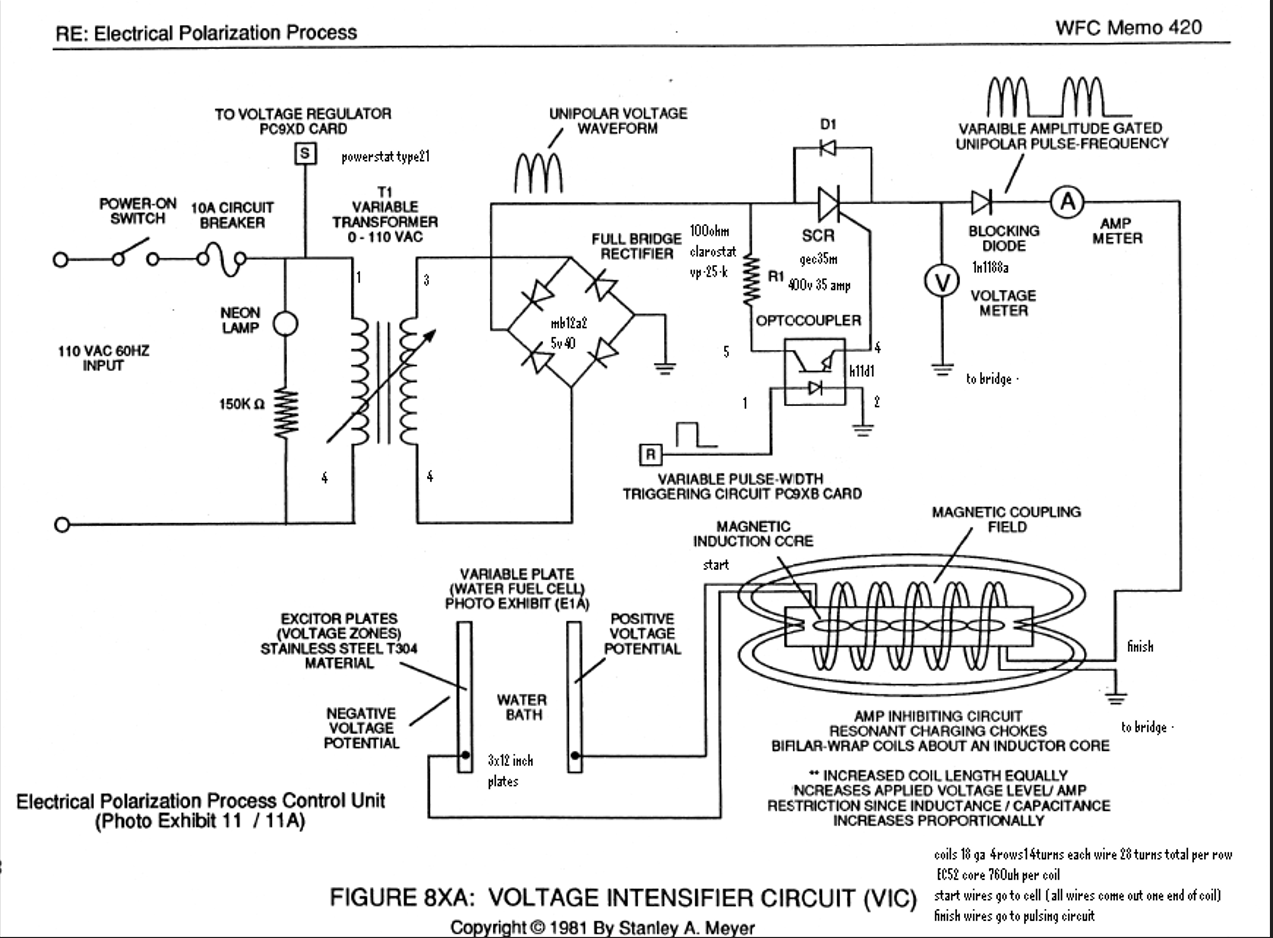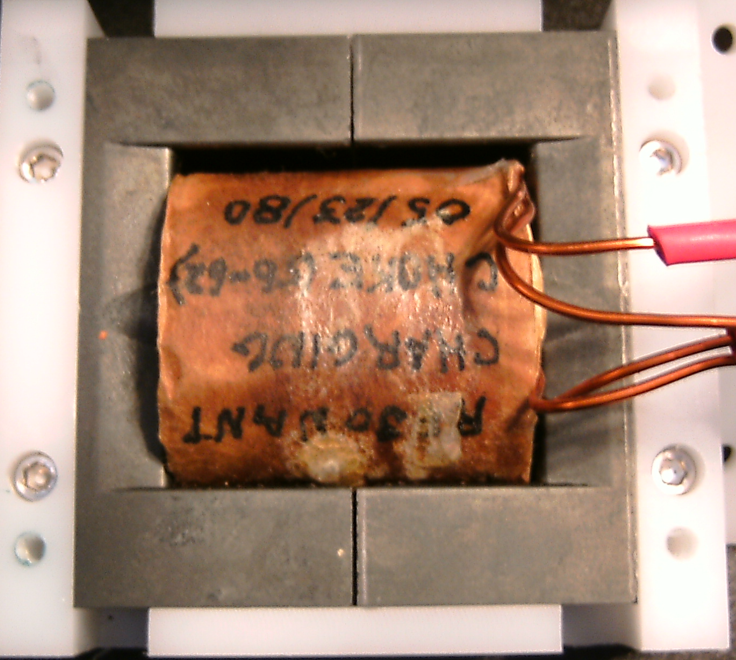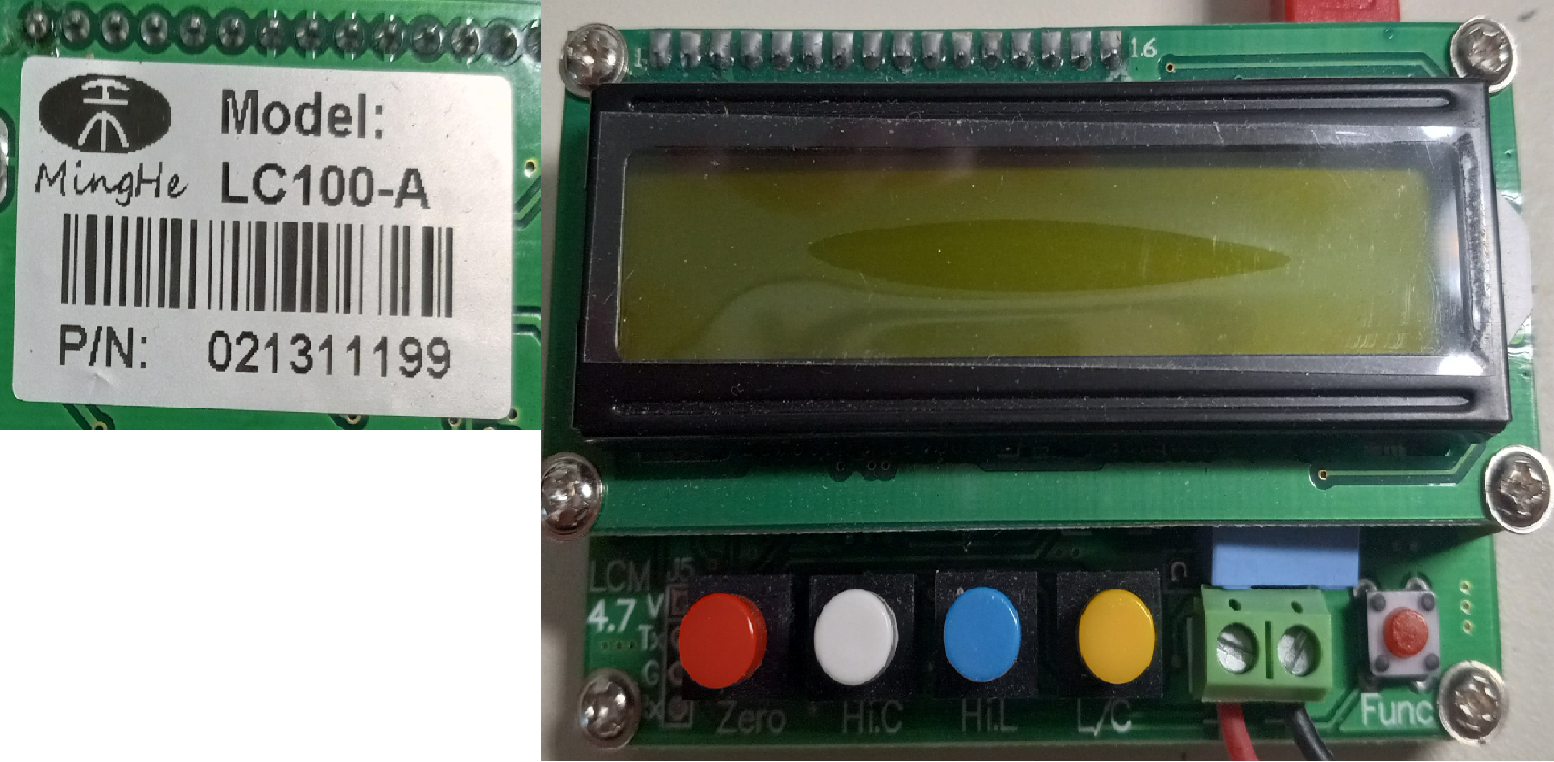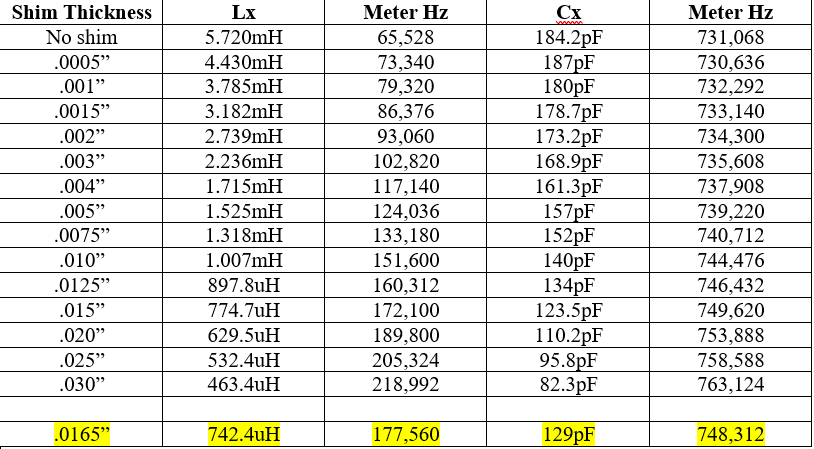2000 Permeability EC52 core
The following test results were performed using a 2000 permeability EC52/24/14 core purchased from Mouser Electronics. Please see the link below for the exact core.
Mouser Electronics_EC52/24/14_N27OL
TDK's document covered the core material. 2000 permeability is listed within attached documentation.
EC52/24/14 are the dimensions in mm. EC52 is called out in the component values given from Stan's estate data as seen below.
According to the above values, the inductance measured was 720uH per coil.
This being a bifilar coil, only one set needs measured. The replication winding methodology for this coil is covered by Max Miller in the below YouTube link. Please reference it to understand how the coils are wrapped.
Irondmax_How_To_Wind_A_8XA_ECore
In the video, Max Miller mentions needing to gap the core. This reference is based off photos from Stan's estate provided by Don Gable. Below is a picture showing Stan's original gapped E core.
An LC meter was purchased to measure the values of inductances with precision plastic shims used for gapping. Plastic was selected to avoid any ferromagnetic materials affecting measurements.
Model number: LC100-A
Part Number: 021311199
The meter was tested with a known inductor purchased from Digikey. 33uH rating. Meter measured 35uH. This was acceptable for the measurements. To get a more precise measurement, a function generator and oscilloscope could be utilized. Below are the values of different gapping distances using the shims. Please note, that these are preliminary measurements. A better methodology is being worked on and will be available at a later date. The cores were kept together by a constant force of approximately 3lbs to avoid fracturing ferrite.
With this data, it can be seen that 0.0165" gets very close to the 720uH value called out in literature.
This data is important for determining engineering values such as instantaneous current, time constants for current curves, inductive reactance, etc.
EXAMPLE: Finding Inductive Reactance at 120Hz:
EXAMPLE: Finding Time constant of inductor:
EXAMPLE: Finding instantaneous current of inductor. t=time constant from above.

